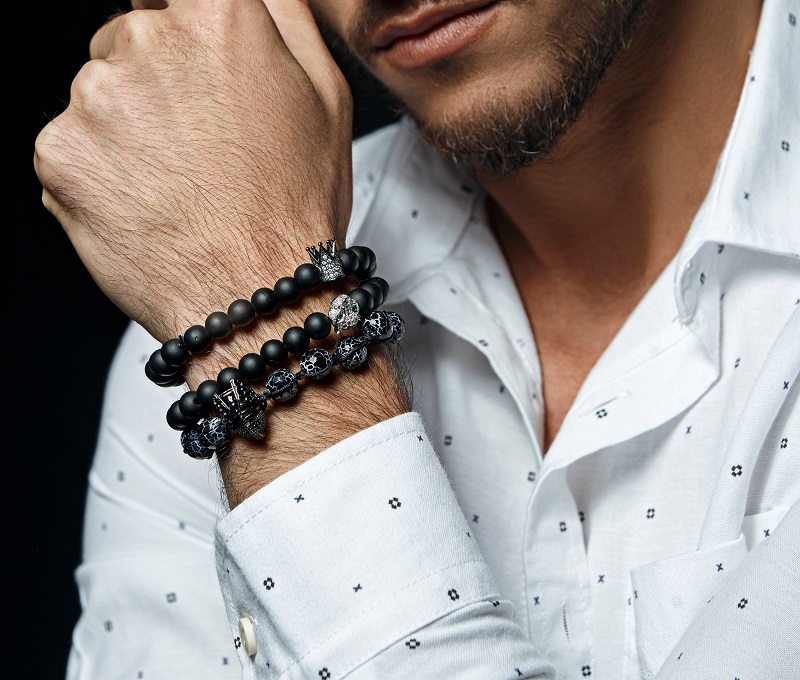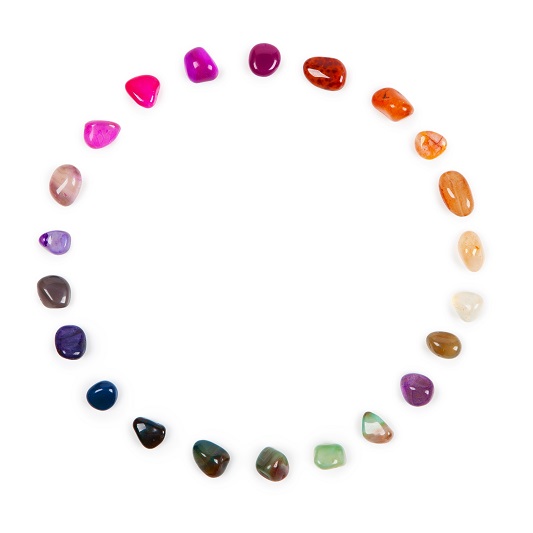What to know about Azurite gemstone?

Cabochons, Gemstone of the Week
11th May 2018
Spodumene, gemstone of the week
1st June 2018Best known for its vivid blue colouring, Azurite is a variety of copper ore. Along with Malachite, the stone is one of the two copper carbonate minerals. As Azurite is rarer than Malachite, the gemstone holds a higher value and is highly sought after around the world. The name of the stone is thought to derive from the Persian word ‘Lazhward’, which means vivid blue. As Azurite is a relatively soft stone, it’s rarely used in jewellery. Instead, the stone is purchased by gem and mineral collectors as ornamental carvings and natural stone. In addition to being a popular gemstone, Azurite is also used industrially. Similar to Garnet, the mineral is used for the production of pigments and coloured dye. Azurite was first discovered in France in a small commune called Chessy. For years after its discovery, the stone was known as ‘Chessy-lite’ to honour its origin. In this article, we explore Azurite in more detail.
How to Identify Azurite
Due to its vibrant blue colouring, Azurite is fairly easy to identify – even for the untrained eye. Some-times, the stone can be confused with Lapis Lazuli as the two minerals are similar in appearance. Howev-er, Azurite lacks the golden flecks present is Lapis, so can be distinguished this way. Azurite is often found with Malachite, its sister variety of copper carbonate. When the two minerals are found together, they are often mixed into a single stone. When mixed this way, the hybrid stone is known as ‘Azure-Malachite’ or ‘Azure-malachite’. Azure-Malachite can be identified by its blue-green colouring.
Azurite is sometimes found with other stones, too. This produces a variety of Azurite hybrids. One of the most popular varieties is a Cuprite hybrid known as ‘Bluebird’. While Azurite hybrids look similar to pure Azurite, there are some key differences between the two. Unlike pure Azurite, hybrids often exhibit green specks amongst the blue stone. Azurite can also be confused with Sodalite, Lazulite, Dumortierite and Hauynite; however, the colour of Azurite is more vivid on close inspection.
Different Colours and Types of Azurite
Azurite is renowned for its vibrant blue colour. The colour ‘azure blue’ is named after the deep blue col-ouring of the mineral. As mentioned above, Azurite is sometimes found mixed with Malachite. As Mala-chite is green in colour, Azure-malachite has a mixture of blue and green colouring. Typically, the body of the stone is blue with green flecks.
Azurite is normally opaque in clarity; however, translucent and transparent specimens can sometimes be found. As specimens of this nature are rare, they hold an extremely high value. As Azurite is a fairly soft stone, it’s rarely used in gemstone jewellery. Instead, the mineral is valued as a collectors stone. When Azurite is used in designer jewellery, it is usually cut en cabochon; this type of cut is best for showing off the vibrant blue colour of Azurite. The mineral is occasionally shaped into beads or tumbled stones. How-ever, the soft nature of the stone is not great for beaded jewellery. As Malachite is harder than Azurite, Azure-malachite is commonly used in jewellery instead of pure Azurite. Typically, Azurite is not treated in any way. Unlike other gemstones, the vivid colour is always natural and is not enhanced with heat. Occa-sionally, specimens are given a waxy coating to improve lustre; however, this is not a common treatment.
Where is Azurite Found?
Azurite was first discovered in the eastern suburbs of France in a small commune called Chessy. Today, Azurite is found in various locations worldwide. Some of the largest deposits are found in the USA, partic-ularly in Arizona, New Mexico, and Utah. Smaller deposits are found in Australia, Congo, Morocco, Mexi-co, France, and Namibia.
Healing Properties of Azurite
Like most gemstones, Azurite boasts a range of healing properties. Known as the ‘stone of heaven’ the mineral can provide guidance through the third eye and help the beholder to connect with their heavenly self. Additionally, Azurite can help to verbalise psychic experiences.
Physically, Azurite can relieve pain associated with the throat and neck. Helping to soothe a sore throat and relieve aches and pains, the mineral is ideal for those suffering from thyroid disease and the common cold. The stone also helps the body to utilise oxygen, allowing the organs to enjoy a steady flow of oxy-gen-rich blood. Azurite is also used in the treatment of bone realignment. Helping to align the spine and rib cage, the mineral is often used alongside chiropractic treatment. Azurite is also believed to detoxify the body. Working to cleanse the kidney, bladder, liver, and blood, the mineral can benefit a variety of chronic health issues.
Emotionally, Azurite relieves stress and anxiety. Helping the beholder to deal with grief, the stone is ben-eficial for those dealing with the death of a loved one. It replaces negative emotions with positive ones, allowing the beholder to enjoy day-to-day life as they should. With this in mind, the stone is popular amongst those suffering from anxiety, depression, and other mental health conditions. Azurite also helps to combat phobias. Best used alongside other treatment, the stone can bring understanding as to why the phobias have come about. This simple step can work wonders in the treatment of fears and phobias.
In Summary
Gem-quality Azurite is popular worldwide. Today, the stone is found in various locations around the world with notable sources including New Mexico, Arizona, and Utah. Loved for its vibrant blue colouring, good-quality Azurite is sought after by gem and mineral collectors. Whether you’re hoping to use the stone for its benefits within crystal healing or you’re looking for a beautiful new addition to your gemstone collec-tion, purchase a piece of Azurite to reap the benefits.




